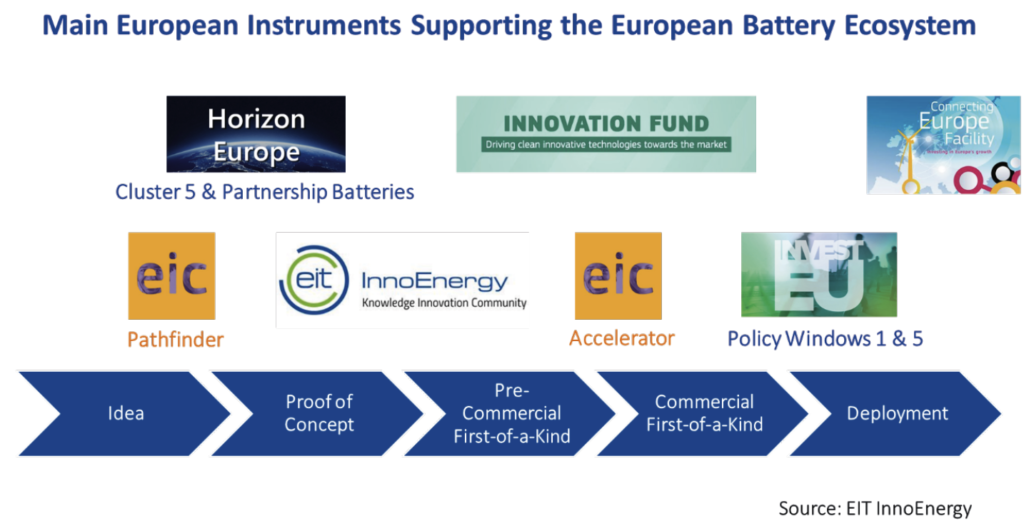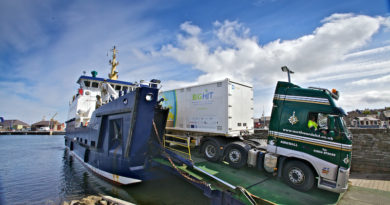
Batteries are closing the loop of Europe’s climate and industrial leadership
Batteries are the crux to achieve Europe’s climate-neutrality, providing the flexibility needed to operate an energy system largely based on renewables, decarbonising road transport, while capturing a sizeable market and creating millions of jobs for Europeans.
Flexibility: the cornerstone of a renewable-based society
The unrivalled ambition of the European Union, to reach climate-neutrality by 2050, goes much beyond climate and environment. It is the new growth strategy of the Union, and embeds a strong transformative power, in all the sectors of our economy and areas of our lives. Although there is not a single way to become climate-neutral, the destination is unquestionable.
On this journey, there are two main drivers for the energy system: to reduce our energy consumption and to decarbonise all our energy carriers.
In this perspective, the EU coined the “efficiency first” principle in the Clean Energy Package, and the long-term strategy published in November 2018 puts renewables at the centre, with around 80% of the electrons produced from renewable energy sources in 2050.
The rise of renewable energy sources in the power sector has been facilitated by a dramatic cost reduction of the various technologies (-82% for PV, -39% for onshore wind and -29% for offshore wind over the period 2010-2019 according to IRENA). With the accelerating penetration of renewables comes the imperative to shift the way the system operates to accommodate this variable generation. The gradual liberalisation of the power system combined with the rising penetration of small scale non-dispatchable generation assets imposes to shift to a system where the demand will increasingly have to accommodate the supply, and where flexibility will become critical.
This profound transformation implies to shift from a system limited in stock but almost unconstrained in flow, to a system limited in flow but unlimited in stock. Hence, to make up for the loss of the storage function that was inherent to fossil fuels, “synthetic” storage like batteries must be developed.
Transport: a belated decarbonisation
On the way to climate-neutrality, all sectors of the economy will have to decarbonise. A special attention has to be dedicated to transport for two reasons. Firstly, looking back at past emissions per sector in the EU-27 between 1990 and 20181, we realise that transport is the outlier, with an increase by 23.1% of the emissions over the period, compared with a reduction by 28.9% from electricity and heat generation, or with a reduction by 38.9% for manufacturing industries and construction.
Despite the increasingly tight EU legislation on CO2 standards for vehicles, tangible improvement is yet to materialise.
Secondly, road transport (which represents 93% of transport excluding international aviation) is based at 94% on oil of which 96% are imported in the EU-27. The urgency to move away from fossil fuel in transport is thus not only a climate and environmental concern, but also an imperative for trade, resilience and strategic autonomy of Europe.
Fortunately, electric powertrains are rapidly penetrating the automotive industry, mainly with Battery Electric Vehicles (BEV) in Europe while some other regions are promoting Fuel Cell Electric Vehicles (FCEV). In both cases, this electrification of transport is part of a climate-neutral future provided that the corresponding energy carrier is produced in a GHG-free manner. Given the comparison between the overall efficiency2 of a BEV (77%) and of a FCEV (30%) and recalling that “efficiency first” should be a guiding principle of our energy and climate policies, promoting BEV for the applications where the range is not a critical element is a no brainer. Besides, despite the additional emissions related to the manufacturing of the battery, the entire lifecycle emissions of a BEV in any of the countries of the EU-27 is at least 29% lower than for a comparable diesel or petrol car3. As a consequence,
there is little doubt about the merit of BEV to decarbonise road transport in Europe.
Looking at BEV as electricity storage on wheels, the rising penetration of BEVs can contribute to accommodate the penetration of renewables and provide the synthetic storage missing to intermittent renewables: electrification of road transport is an essential piece of the Energy Systems Integration. This implies a systemic transformation, including the rapid adoption of smart charging and Vehicle to Grid solutions4, the continuous upgrade of power grids and the deployment of a dense charging infrastructure (around 20 Bn€ by 2030 in public charging infra- structure), and first and foremost, an acceleration of the manufacturing capacity of electric powertrains and of batteries in Europe.
Battery: a strategic imperative
The automotive industry represents 13.8 million jobs in Europe including 2.6 million of direct jobs in manufacturing of motor vehicles (up to 42% of manufacturing employment in Bratislava), and exhibits a positive trade balance of more than 80 Bn€. The prompt alignment of this industry with a climate-neutral pathway is thus a clear socio- economic imperative. Some European manufacturers have already initiated an irreversible transformation towards electric powertrains: while in 2017-2018 China had invested 7 times as much as Europe in e-mobility with 21.7 Bn€, in 2019 this was reversed as 60 Bn€ have been committed in Europe, more than 3 times as much as in China5.
A battery cell is not a commodity: the performance not only depends on the type of cell, as the quality of the manufacturing process and of the advanced materials employed could also impact the use. On top of that, the safety concerns impose to Original Equipment Manufacturers to have an unwavering trust in their suppliers. For this reason, cells cannot easily be sourced anywhere as commodities.
Besides for BEVs, the battery itself could rep- resent 35% to 50% of the cost structure of the vehicle, creating a clear incentive for manufacturers to have, at least, a geographical proximity with their cells’ suppliers. There is thus no doubt about the strategic imperative to accelerate the development of domestic manufacturing capacities of sustainable batteries in Europe.
Besides, the plummeting cost of this storage solution (-13% in 2019 and -87% from 2010-2019, on the way to be below 100$/kWh for a battery pack in 2024, and around 61$/kWh in 20306) opens new avenues beyond mobility, like in utility-scale storage for ancillary services, or innovative business models involving behind-the-meter storage.
European batteries: a one-off opportunity for Europe’s green and resilient recovery
The European Battery Alliance launched in 2017 by Vice-President Šefčovič should keep leading the way of the EU industrial policy. It has demonstrated its merit in federating the industrial ecosystem along the entire battery value chain and in shifting our mindset regarding our capacity to compete on the global stage, relying on our unique competitive edge. We are now starting to think at the scale of the continent.
 The recovery must be the occasion to gear up this process, from lab to large-scale deployment to build our industrial competitiveness while developing our future leadership in new technologies. The Union should rapidly mobilise its existing instruments, such as Horizon Europe and notably the EIC and the relevant KICs for start-ups and scale-ups, the Innovation Fund, and the Connecting Europe Facility for the charging infrastructure. Beyond that, the new policy window of InvestEU for Strategic European Investment will be essential to unleash private investments contributing to build the 420 GWh of battery manufacturing capacities representing around 15 gigafactories needed to meet the European demand by 2030.
The recovery must be the occasion to gear up this process, from lab to large-scale deployment to build our industrial competitiveness while developing our future leadership in new technologies. The Union should rapidly mobilise its existing instruments, such as Horizon Europe and notably the EIC and the relevant KICs for start-ups and scale-ups, the Innovation Fund, and the Connecting Europe Facility for the charging infrastructure. Beyond that, the new policy window of InvestEU for Strategic European Investment will be essential to unleash private investments contributing to build the 420 GWh of battery manufacturing capacities representing around 15 gigafactories needed to meet the European demand by 2030.
Member States could also power this trans- formation with the Recovery and Resilience Facility, including through reskilling, infrastructure and scrappage schemes. In these times of economic recovery, on top of safeguarding and upgrading most of the employment in the automotive industry7, the Union could create one million jobs in the European Battery ecosystem worth 210 Bn€ by the end of 2022.
The Union must unlock this tremendous value creation contributing to a green and resilient recovery and delivering jobs for Europeans. This is a moment of truth for Europe and for our green industry.




